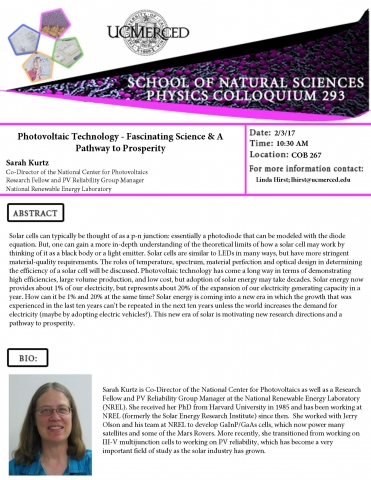
Sarah Kurtz, National Renewable Energy Laboratory
Abstract:
Solar cells can typically be thought of as a p-n junction: essentially a photodiode that can be modeled with the diode equation. But, one can gain a more in-depth understanding of the theoretical limits of how a solar cell may work by thinking of it as a black body or a light emitter. Solar cells are similar to LEDs in many ways, but have more stringent material-quality requirements. The roles of temperature, spectrum, material perfection and optical design in determining the efficiency of a solar cell will be discussed. Photovoltaic technology has come a long way in terms of demonstrating high efficiencies, large volume production, and low cost, but adoption of solar energy may take decades. Solar energy now provides about 1% of our electricity, but represents about 20% of the expansion of our electricity generating capacity in a year. How can it be 1% and 20% at the same time? Solar energy is coming into a new era in which the growth that was experienced in the last ten years can’t be repeated in the next ten years unless the world increases the demand for electricity (maybe by adopting electric vehicles?). This new era of solar is motivating new research directions and a pathway to prosperity.



